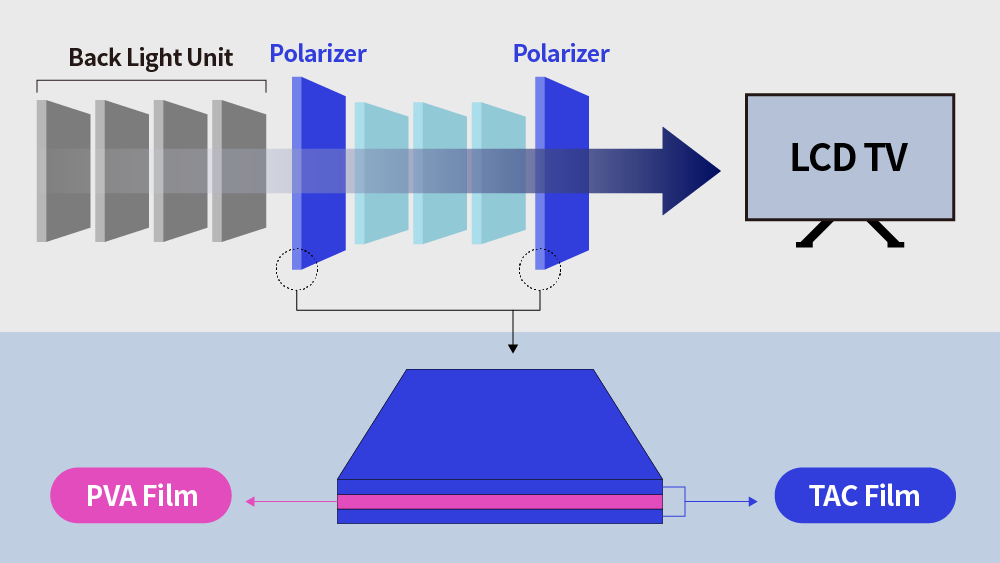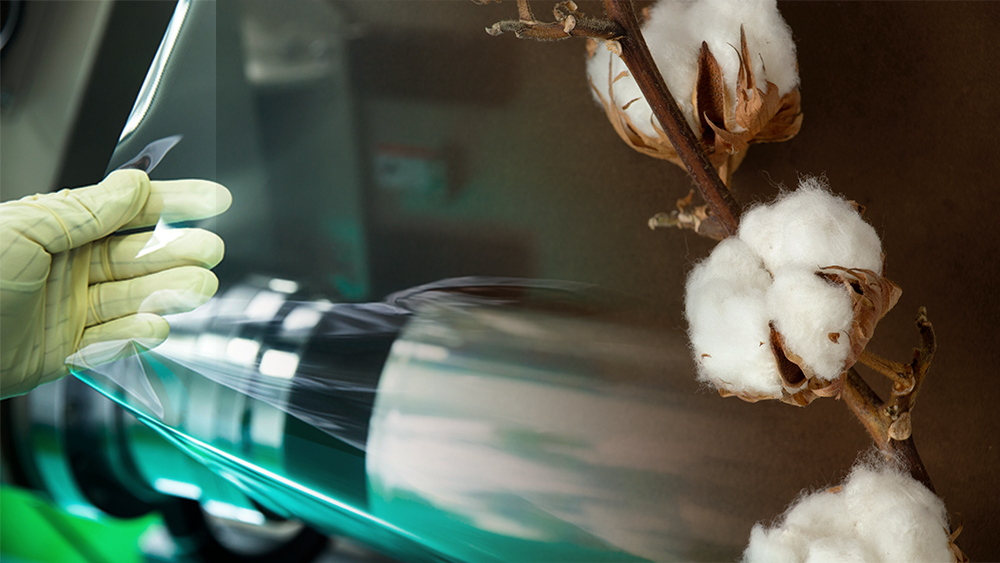Brand Journalism
Brand Journalism
2023-04-03
Tac Film, an Indispensable Component for Watching YouTube

It may not be an exaggeration to say that many people watch YouTube every day. But in order to do so, we need a device that connects us to the platform. We want to have better devices, be it mobile phone, TV or tablet PC, for better YouTube experience. When choosing a device, only few people would think of one material that works to render better image quality on the screen of the device of their choice. That is TAC film that protects polarizers.
Polarizers in layman’s terms are the filters that pass through only the waves of the light in one direction while all other light waves are absorbed. For the polarizing filter to work properly, TAC film is the key as without it we will not be able to enjoy videos on our devices.
Despite the importance of the material, Korea used to rely on imports until 2009 when Hyosung Chemical started to produce TAC film for the first time in Korea.
A critical material in display production
As crucial part of display production, polarized film has a thickness of 0.3mm which matches the width of two to three human hairs that pass through the light wave moving in one direction. In other words, it is an optical element that allows light to pass only if it is wiggling in a certain direction while absorbing or reflecting other lights. It helps improve display brightness in devices. Because it is very delicate in nature, it requires protection and this is where TAC film comes in handy.
Polarizing film consists of PAV (Poly Vinyl Alcohol) of which light waves moving in one direction pass through, and TAC (Tri-Acetyl Cellulose) that has excellent polarization properties but with not much strength due to its thin layers. This is where TAC film comes in to play a crucial role. TAC film has to have high tensile strength with excellent optical isotropy for it to function properly. In this way, when polarized light passes through TAC film it is not distorted. As such, it plays an indispensable role in display devices.

Hyosung Chemical has developed TAC film with its proprietary technology for TV, display screen, laptop, and mobile phone application. Its TAC film production facility in Ulsan is the first Korean TAC film production site to be established as of 2009. Its second production site was launched in 2013 in Cheongju. With established production capabilities, Hyosung Chemical now boasts an annual production capacity of 110million square meters.
TAC film used to be imported but with Hyosung Chemical’s technology and production capacity now the country has a home-grown option. Not only that, domestic production has led to the development and refinement of technology and competitive edge in finished display products and helped solidify the domestic players’ position in the global industry. With its partial acquisition of Agfa Photo Germany’s assets, Hyosung Chemical’s productivity and product quality have been significantly improved. Its Optical Film PU has grown into a globally leading name. Hyosung Chemical has also been continuously expanding its production capacity domestically to position itself as a leading player in displays.
Environmentally friendly yet more durable
Hyosung Chemical TAC film not only boasts high quality but also eco-friendliness as it is made of organic materials such as cellulose from cotton linter. As such it is in compliance with regulations on hazardous substances and yet boasts high tensile strength in high-temperature and humidity. It also has excellent uniformity in its film surface which helps the coating layer added to the surface stay intact longer. In addition, its superior surface smoothness ensures better display quality. With TAC film, people can enjoy videos in high quality anytime anywhere as the videos they enjoy will be able to show the world as it is.

A global pioneer, Hyosung Chemical
Based on its home-grown technology, Hyosung Chemical has contributed to the development of the domestic industry. Recently, it has also successfully expanded into the Chinese market which is regarded as the world’s largest display market. With the advancement in electronic material technology, it has been developing new film materials in order to expand its horizon to various optical film markets. In so doing, Hyosung Chemical is to further grow its standing in the global display market.
Hyosung Chemical is also working on the development of a retardation film that will improve oblique viewing property by expanding the viewing angle of display products with optical compensation. Hyosung believes it has great potential as the next-generation material.
To fulfil its social responsibility as a key player in this industry, Hyosung Chemical has embarked on an early journey to reduce its carbon emission with an understanding petrochemical industry and its carbon footprint. As a result, Hyosung Chemical has succeeded in reducing its carbon intensity compared to that of 2018. Including greenhouse gas emission statement and external verification of the emission, the company continues on its efforts to reduce its carbon footprint. Hyosung Chemical will continue to take on the leading role in introducing green products by advancing technology via R&D and extensive and investment.